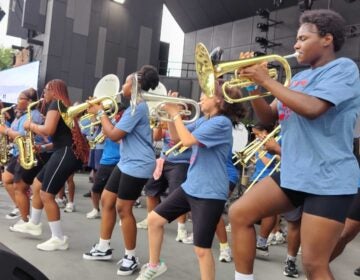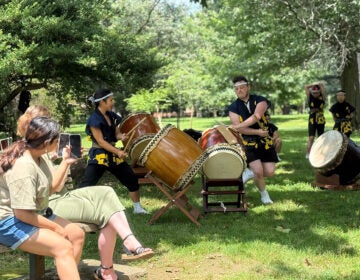N.J. native part of the driving force behind rover’s Mars exploration
How do you get a license to drive a Mars rover?
Frank Hartman, a member of the team that is now piloting the Curiosity rover on the surface of the Red Planet, graduated in 1992 from the University of the Art with a degree in sculpture.
That fine-arts degree started a twisted career path that wound up in outer space.
A native of Pitman, N.J., Hartman entered Drexel University to study electrical engineering, but felt frustrated.
“If you can imagine being 20 years old and starting to do some co-op jobs in some of these engineering firms, it seemed a little like I was getting pigeonholed early in my life,” said Hartman in a telephone interview from Los Angeles.
He dropped out of Drexel and enrolled in the University of the Arts, then called the Philadelphia College of Art. There he utilized lights and electric motors to make modernist, kinetic sculpture.
“I feel kind of comfortable playing with wires and motors,” he said. “You weren’t building something for a utilitarian purpose. You were building something for an artistic purpose, which was a really different approach.”
Hartman was also tinkering with computer animation graphics. This was the early 1990s when composing simple digital animation required huge computer systems. Sophisticated immersive games such as “Call of Duty” could hardly be imagined.
An opportunity that was out of this world
After graduating, he started looking for work as a video editor, eventually moving to Los Angeles to work for a video production company.
Then he met someone who knew someone who knew someone at NASA’s Jet Propulsion Lab, which needed somebody to create 3-D landscapes for a flight simulator. A few years later, the Mars rover division needed someone to simulate 3-D Martian landscape based on what could be seen through a camera-eye mounted on the front of the rover.
“It’s like looking out the front window, right?” said Hartman. “You never get a side view of the car, you never get a top view of the car. It’s always from the inside looking out. And that’s great, but, you can imagine, you never see your wheels. You can’t see what’s under you. We take the imagery coming out of the front of the rover, and use 3-D graphics to generate other views.”
Hartman was on the team that drove the rovers Opportunity and Spirit; now he’s virtually behind the wheel of the Curiosity. In between missions, he earned a master’s degree in engineering from Stanford University, but says he uses his sculpture training everyday.
“All the rover planners are a diverse set of people with different strengths, but one thing I do feel I’m able to do is interpret three-dimensionally what I’m seeing in these images,” said Hartman. “Inside my mind [I] build up a strong understanding of what I’m seeing.”
For the next two years, Hartman and his NASA colleagues will be living on Martian time, whose diurnal cycle is about 37 minutes longer than an Earth day. After landing the Curiosity two weeks ago, they will finally get Curiosity’s wheels spinning this week.
WHYY is your source for fact-based, in-depth journalism and information. As a nonprofit organization, we rely on financial support from readers like you. Please give today.




